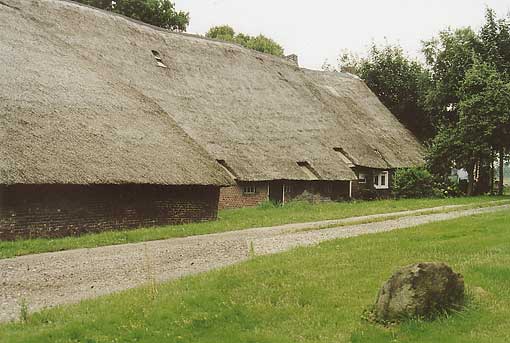


| Drenthe is one of the 12 provinces of
The Netherlands. It's the third most northern. In the north is the province
of Groningen, in the west Friesland (Frisia), in the south Overijssel and
in the east the German border. Drenthe is different. Its elevation is 10-25
metres above the surrounding area and that's one of the reasons the dolmen-builders
settled here 5500 year ago. The soil contains sand, loam and big boulders
and that's what this people used as building materials to make the mysterious
stonegraves. In the east of Drenthe is a range of hills, the 'Hondsrug'
(Dogs-ridge). You'll notice the concentration of dolmen on this ridge. Drenthe
only has 500,000 inhabitants, it is one of the least densely populated provinces
in the country. The inhabitants used to be very poor. Nowadays they are
prosperous thanks to fertilizers, industry and tourism. Assen,
the capital, has 52,000 inhabitants. Here, in the Drents
Museum you will find the beakers, axes, scrapers, beads etc. that were found
in the hunebedden. Assen is not
the biggest town. That's Emmen in the southeast with 100,000
inhabitants. Emmen has the most wonderful
Zoo in the country. In Borger, next to the biggest
hunebed (D27), is the National Hunebed Information
Centre. Drenthe's scenery
is varied and very beautiful. Thousands of tourists spend their holiday
here in the woods, the heather, the dunes
and on the lakes. Drenthe is ideal for cycling. There
are over 600 kms of free cycling-track throughout the province. And bicycles
are very popular in Holland!
And once upon a time, 5500 years in the past, this region was the big centre of the Funnel Beaker Culture.... |